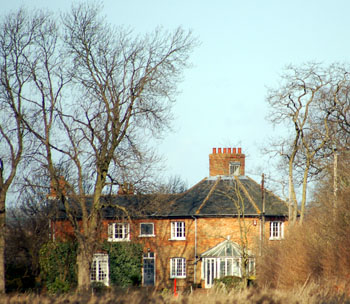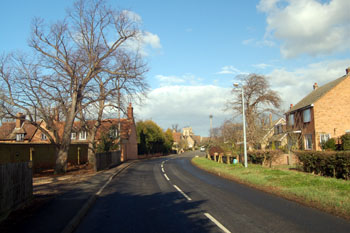The Parish before 1086

Octagon Farm seen from Bedford Road February 2008
Stone and Bronze Ages
Various finds in the parish over the centuries have included two Palaeolithic hand axes and a flint axe, possibly Neolithic, found near Moxhill Farm. Cople has a number of archaeologically important remains, all part of a major Neolithic and Bronze Age mortuary complex (dating between c. 4,000 and c.700 BC) close to Octagon Farm, which were scheduled as Ancient Monuments in 1993. These include barrows and mortuary enclosures, evidences of structures, pits and post-holes, and pottery and flint flakes.

View north along Northill Road February 2008
Iron Age and Romano-British Period
Aerial photographs from 1947 showed four ring ditches in Culvers End Field, Home Farm. Quarrying that took place shortly thereafter removed two of them but, though the other two were scheduled for destruction, they survived until the latter part of the century. In the early 1990s, rescue excavations uncovered an oval ring ditch of unknown date, but possibly of late Iron Age or Romano-British origin; in it was a base of a rectangular limestone structure and evidence of significant peat burning, possibly as a funeral pyre. There were also two male burials of unknown date, pottery sherds (probably early Mid-Saxon), an iron tool and a blue glass bead, this last probably from the 1st to 2nd century A.D.
There are other ring ditch sites and settlement features, also, such as ditched enclosures and an Iron Age and Roman period settlement complex spanning the Cople-Willington parish boundary, described first in 1960.
Roman coins were found in 1851 near the road leading southeast to Northill. It is possible that there were two Roman roads in the parish.